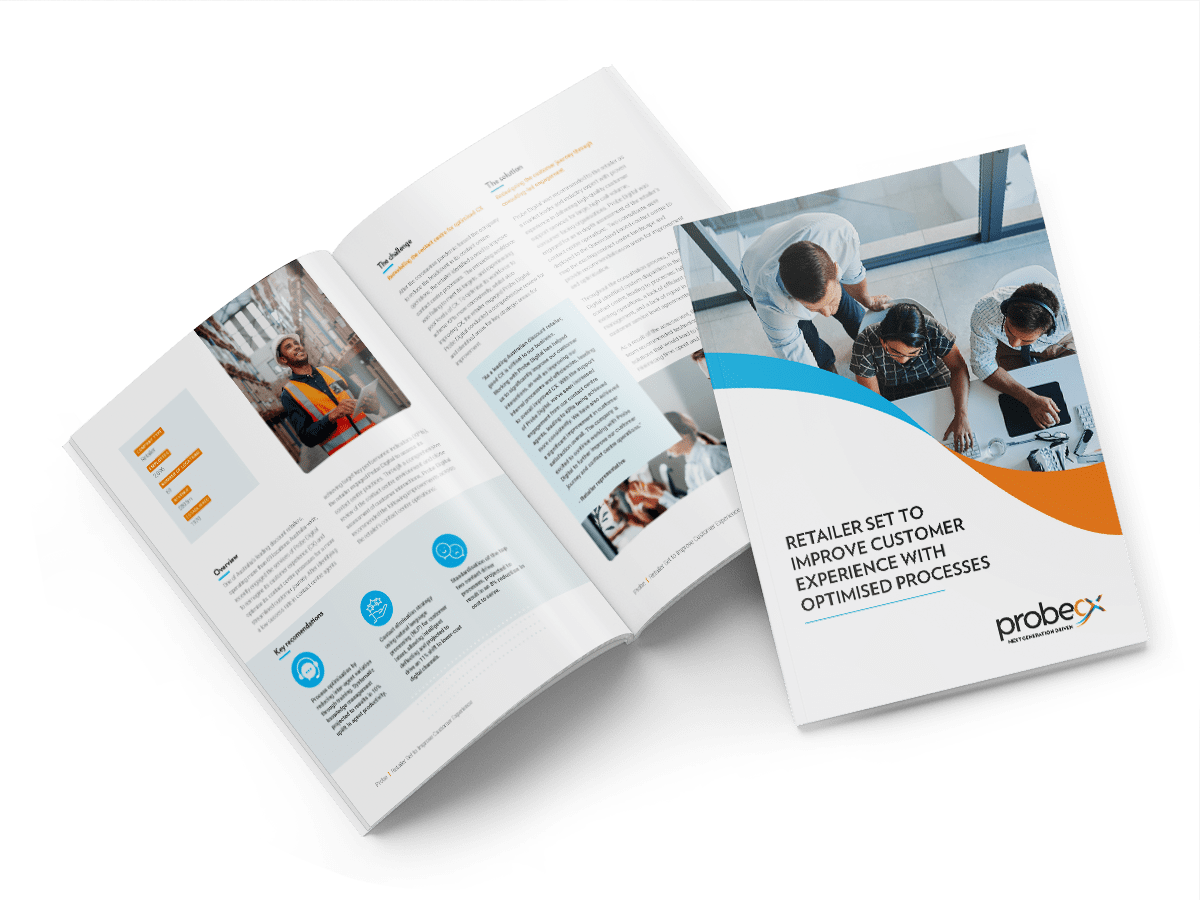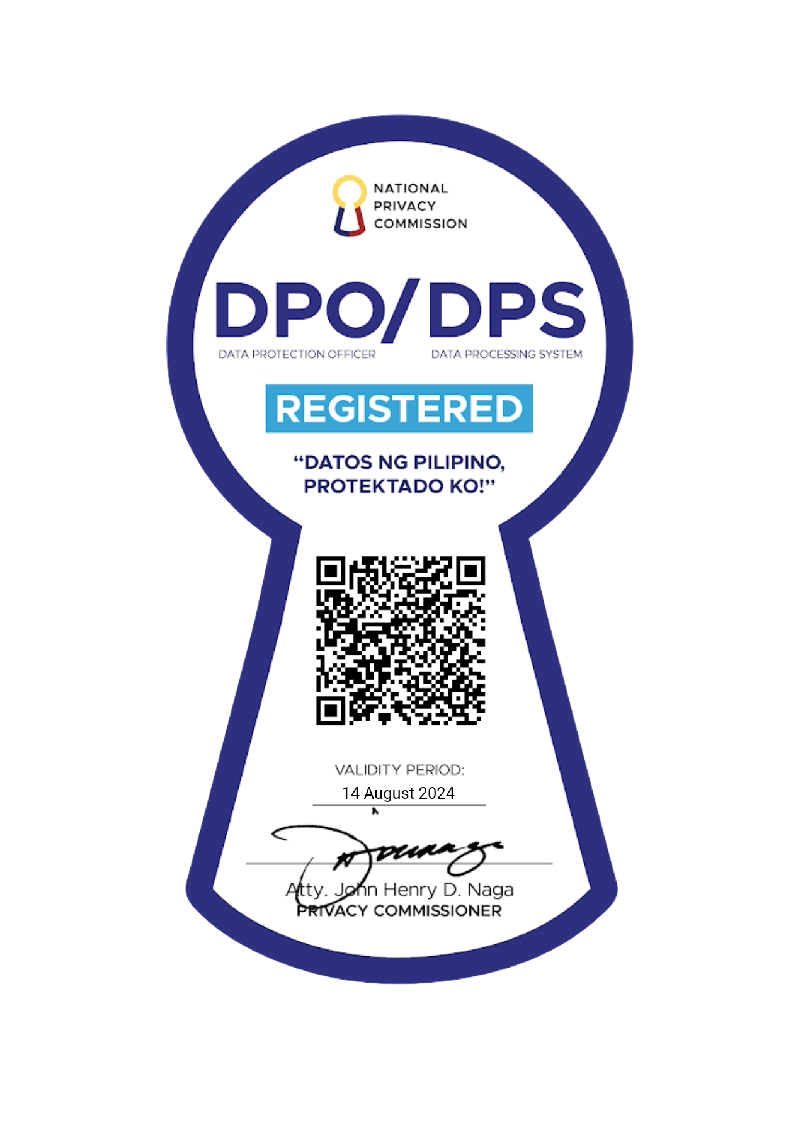-
About Us
Probe CX is a tech-powered, global customer experience organisation that amplifies human capabilities with technological excellence.
-
Vision and Culture
We help our clients become modern digital organisations by combining the latest technology with people, process and data.
-
Executive Team
Meet the team with unmatched experience committed to helping organisations create environments for digitally-enabled CX to thrive.
-
Compliance
Industry-recognised certifications to protect what matters most to our clients and their customers.
-
Locations
Over 19,000 team members delivering exceptional customer experiences across five countries.
-
Reasons to choose Probe CX
The top nine reasons to get more closely acquainted with Probe CX.
TECHNOLOGY & TRANSFORMATION SERVICES
 Creating exceptional customer experiences by 'doing it better'
Creating exceptional customer experiences by 'doing it better'
Optimise your customer experience by designing, deploying and managing digital solutions customised to your unique needs.
Continue reading- Blog
- The Great Reshuffle explained
The Great Reshuffle explained

David is now paid far less than what he earned back in London, having now moved to northern England, but has found the right balance between his work life and personal life. Out of the millions of people who completely reassessed their work-life balance, David is but one. This phenomenon has been nicknamed ‘The Great Reshuffle’ and is forcing organisations to reconsider how they foster employee wellbeing and recruitment initiatives.
More than 50% of employees that are deciding to quit their jobs are actually not leaving the workforce completely, but are instead leaving their current jobs for something better; something that fits their new post-pandemic dependency and work-life balance.
While ‘The Great Resignation’ was about employees resigning permanently and leaving jobs completely in search of their purpose, ‘The Great Reshuffle’ is more about employees leaving in sight of something different. Organisational leaders are now asking: how can we attract quality talent and what do we need to do to keep them?
In this blog, we take you through all there is to know about ‘The Great Reshuffle’ and how your organisation can survive it.
What is ‘The Great Reshuffle’?
The Australian Bureau of Statistics saw Australia’s quit rate hit 9.5% in the year leading up to February 2022; the highest level it’s ever been since 2012. In the United States, the number of self-employed employees rose by 500,000 since the start of the pandemic. This talent shortage is causing issues in economies around the globe and is a direct result of employees simply saying ‘no more’. No more stress, no more long hours and no more feeling underappreciated. ‘The Great Reshuffle’ is about employees reshuffling their job lives to line up with a comfortable and flexible work-life balance.
What does this look like for an employee? It depends on what aspect of their lives they want to be reshuffled. Do they want better wages? Do they want flexible working hours? Are they looking to work for a different industry that matches the passions they nurtured during the pandemic and lockdowns? If employees are answering yes to any of these questions, chances are, they are out there looking for organisations that can deliver on these promises.
In Microsofts’ 2022 Microsoft Work Trend Index, we can see just how much the job market has changed as a result of COVID-19 influences. 47% of employees now value their personal and family lives and 53% would prioritise their wellbeing and health over their jobs now more than in pre-pandemic figures.
We’ve all heard about global workplace phenomena like the global financial crisis of 07’ and 08’ or ‘The Great Depression’ where employees’ work-life balances were completely reshuffled. But, the main difference with ‘The Great Reshuffle’ is that employees are in charge of these reshuffles, not organisations.
“People in professional work now have a choice”, explains London School of Economics Associate Professor Grace Lordan. “Previously, with the likes of the Industrial Revolution, most people weren’t skilled enough to get the high-income jobs. Now knowledgeable workers are in such high demand that there’s a skill shortage.
Employees and job seekers now have the power. The power to control employment conditions and say yes to jobs that meet their wants and needs…. and also no to those that don’t. Let’s take the rise in popularity of hybrid or remote work models: a working model that was introduced to foster business continuity but has become a highly sort after work arrangement post-pandemic. According to a Microsoft study, 70% of employees want to continue working from home and two-thirds of businesses are planning to redesign their offices to suit hybrid work.
In summary, ‘The Great Reshuffle’ is a time where the work-life balance falls in favour of the employees, not the employers. Organisations are under increasing pressure to invest in employee engagement and wellbeing initiatives that will result in employee retention while attracting quality talent.
How can organisations survive ‘The Great Reshuffle’?
Organisations have to become proactive in creating compelling employee engagement and recruitment initiatives if they want to sell themselves as an employer of choice in the era of ‘The Great Reshuffle.
Consider flexible work arrangements
A surefire way to be on the losing side of ‘The Great Reshuffle’ is to try and re-establish the pre-COVID traditional working conditions. The reality check is that social distancing regulations and the countless lockdowns gave employees a taste of remote work life and, not surprisingly, many liked it. In fact, 42% of employees want flexible working conditions to continue post-pandemic.
The increased flexibility in their personal lives and the lack of commuting have become the new norm for a lot of employees and losing those benefits could be deal breakers. This could mean embracing fully remote job opportunities, hybrid schedules or four-day work weeks. ‘The Great Reshuffle’ is about supplying your workers with options and letting them pick what works best for them moving forward.
Foster a positive working environment
Jobseekers and employees are starting to pay more attention to an organisation’s culture now more than ever. Emphasising in job advertisements or on your internal communications site any new or upcoming employee development initiatives or professional development opportunities is a great way to attract and keep quality candidates. Celebrating employee achievements and posting them on social media is another way to actively portray that you care about the successes of your teams.
Unpredictable work scheduling is no more
85% of employees believe unpredictable work scheduling affects their overall personal wellbeing with 40% experiencing burnout due to the unpredictable nature of their rosters. Organisations have to start embracing digital transformation tools that can help keep track and maintain efficient employee schedules. This way, when issues come up, the system can rectify them quickly and avoid last-minute changes that may stress your employees. Likewise, employee exit interviews are an excellent opportunity to learn if staff turnover is being impacted by negative work scheduling.
Which ‘Great’ revolution should your organisation focus on?
There are a multitude of terms being thrown out to describe talent shortages and behavioural changes in employees around the globe. So which one should your organisation focus its efforts on surviving? The answer is all of them. ‘The Great Resignation’, ‘The Great Re-evaluation’ and ‘The Great Reshuffle’ are all highlighting the need for organisations to take a long hard look at themselves and identify areas of opportunities so they can become ‘employee-focused’. In the end, demotivated employees lead to poor customer service, and poor customer service leads to poor returns. It’s that simple.
Related Articles
Shared Services
4 ways to manage overflow
Top overflow solutions to help improve your overall customer experience in times of peak demand.
Intelligent Automation
What contact centres in 2028 could look like with Generative AI
Discover a world where technology is helping change the customer experience conversation for contact centre managers, agents and callers.
Shared Services
Probe CX navigated the COVID-19 work-from-home debate.
Following the Contact Centre Week interview, Probe CX's CEO Andrew Hume discusses the work-from-home mobilisation of its global organisation and what it means for the future of work.
© Copyright 2024 Probe CX | All Rights Reserved
Privacy Policy | Financial Hardship Policy | Whistleblower Policy | Complaints Procedure | Supplier Code of Conduct | Make a Payment | Client Login





